نشرت على Sep 6, 2022
What is VoIP and How Does it Work?
VoIP is derived from the initials of the words Voice Over Internet Protocol & audio signals are carried over the internet line in phone calls.

No area would affect people on a larger scale more than telecommunications. VoIP or Voice Over Internet Protocol is one of those improvements in remote communications that offer service over the Internet Protocol.
Information technology has become an indispensable tool for social interaction and has begun to shape our way of life. In addition, the development of domestic digital platforms has always been supported at the state level due to their impact on the development of the economy, reducing the cost of international transactions, improving the quality, and reducing the timing of the provision of public services.
Voice Over Internet Protocol (VoIP)
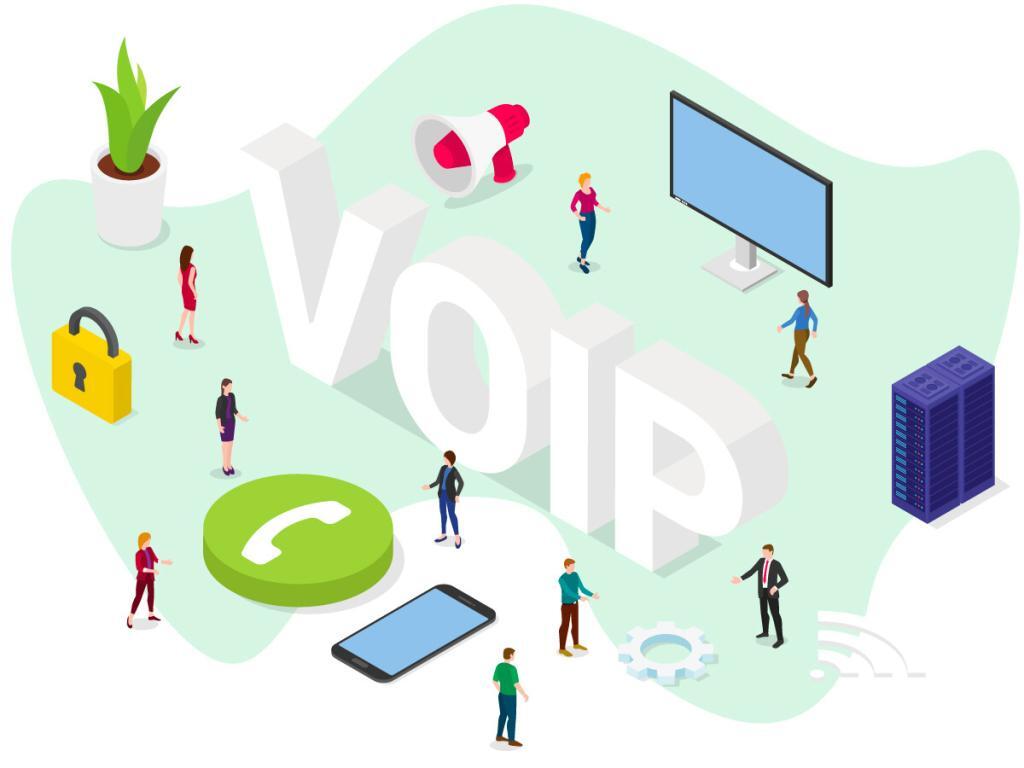
The Voice Over Internet Protocol is the same as Internet Protocol voice, most commonly referred to as VoIP.
Voice over IP is the distribution of voice traffic over Internet networks. The Internet Protocol (IP) was originally developed for the transmission of data over computer networks and, after its successful implementation, has been adapted for the transmission of voice.
Voice over IP ( VoIP ) facilitates tasks and enables the provision of services that would be difficult or expensive to implement using traditional PSTN telephone networks:
More than one phone call can use transmission on the same broadband phone line at the same time. Thus, Voice over IP can make it easier to add new telephone lines to a company.
Services that telephone companies charge extra for, such as call forwarding, caller identification, or automatic redialling, are easily implemented using Voice over IP technology.
The Unified Communications system is based on Voice over IP technology, as it allows integration with other Internet services such as video conferencing, instant messaging, and so on.
These and many other benefits of Voice over IP technology are driving companies to implement VoIP PBXs at an incredible speed.
What Is This Technology For?
VoIP or Voice Over Internet Protocol is a new mode of communication that allows you to make voice calls using only bandwidth or a Wi-Fi network connection. This is a group of resources that allow you to send voice over a signal that is transmitted over the Internet using the Internet Protocol (IP).
This system converts voice into data packets that are sent to recipients for communication, offering superior sound quality and no interruptions, which is completely different from what happens with regular calls, which are sent over a telephone line. VoIP circulates over any IP network, even those found on the Internet, such as local area networks, also called local area networks.
Don’t Confuse Voice over IP with IP Telephony!
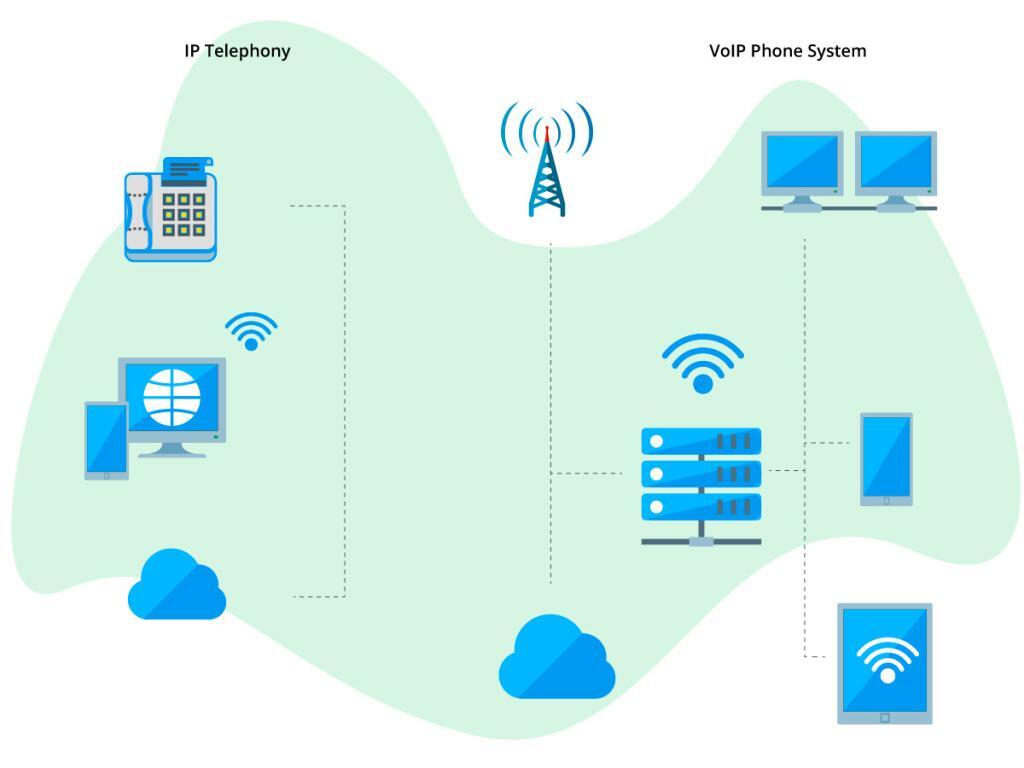
One of the differences is that VoIP technology allows you to communicate over IP protocol, while IP telephony is a wider tool to provide telephone services to the public. Also, It can be seen that IP telephony covers a much wider area than that just voice communications and telephone equipment, IP Telephony is a way of communication that uses the internet to exchange voice messages, fax, and other types of communication. Not to mention that the Implementation and requirements are therefore different.
What are the basic elements of voice communication over the Internet?
Various elements are involved in IP communication. Next, we will see what are the elements involved in VoIP communication:
Terminals
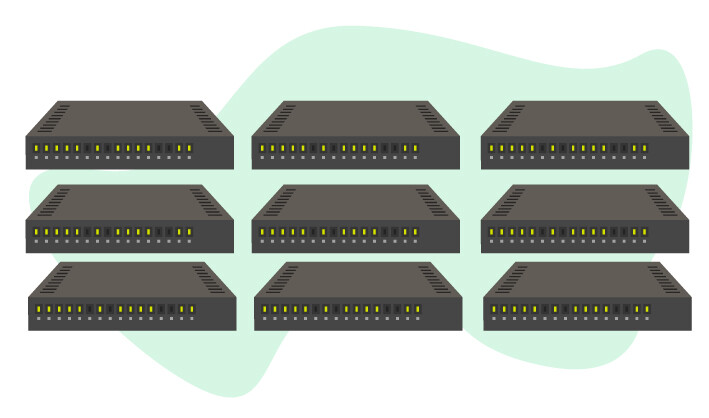
Terminals can be implemented in both software and hardware, they are replacements for existing phones, softphones, and ATA are widely commonly used.
IP phone
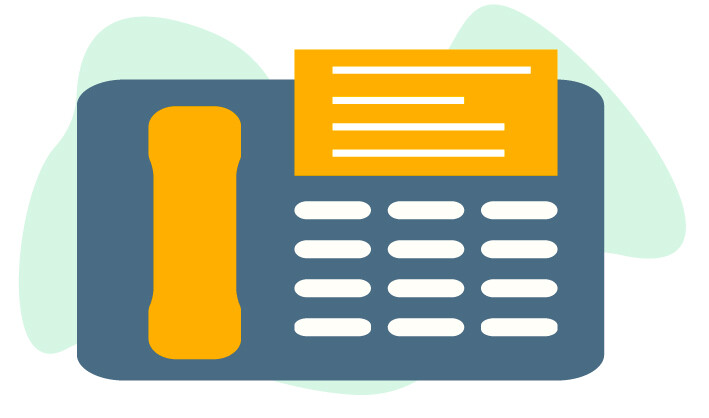
Physically, we can say that an IP phone is very similar to a traditional phone, but we can say that nothing like it is a way of transmitting voice. strong>. An IP phone connects to the Internet through a router, hub, or cable modem, then makes calls and receives calls over the Internet. For this process, we do not need to turn on the computer, we need good access to broadband Internet.
Softphones
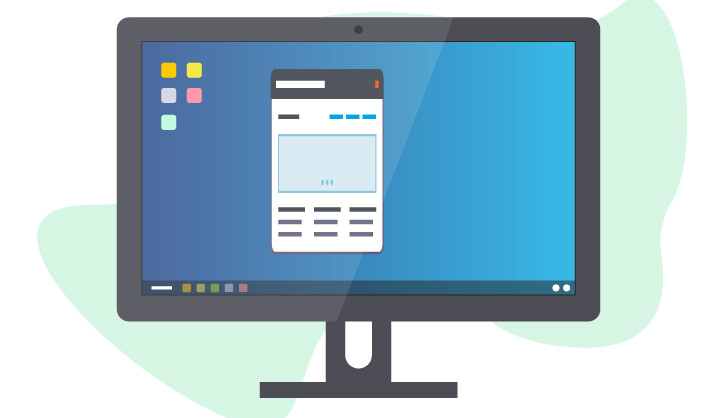
This is a software program for making telephone calls over the Internet. Softphones completely mimic a regular phone through a computer. This allows you to make calls to any destination we have in mind or to a terminal, it is usually part of the VoIP environment and is based on the SIP Proxy standards.
Analog Telephone Adaptor (ATA)
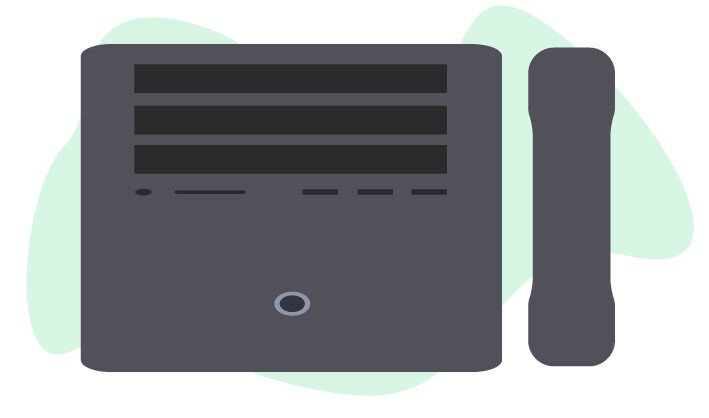
This analog telephone adapter, also known as ATA (short for Analog Telephone Adapter), is a device that allows you to connect a classic telephone to a packet-switched or Internet Protocol (IP) network, where its main function is an adapter that converts an analog phone to an IP phone via an Ethernet port.
Gateways
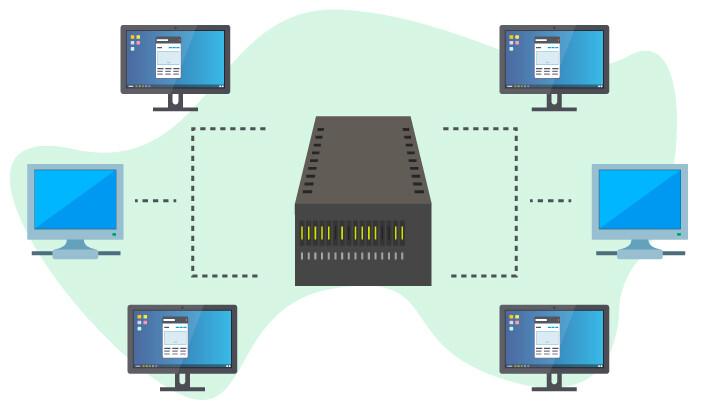
This is a link that connects to the traditional telephone network, which acts transparently to the user, in other words, it is she who is responsible for overcoming the signal of a conventional telephone. to an IP phone or vice versa.
Gatekeepers
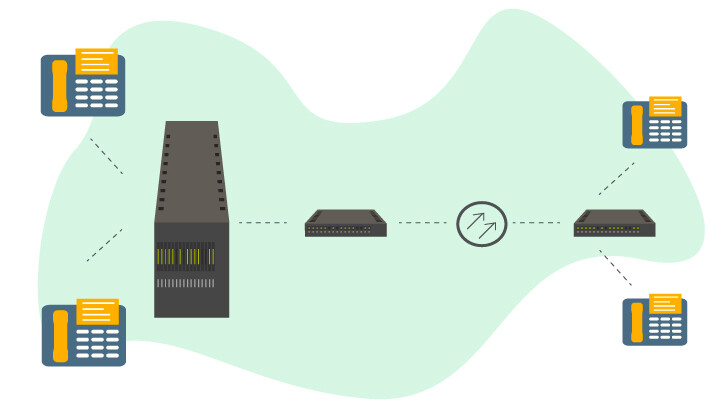
A set of interconnected central servers, Its primary functions are to convert phone numbers to IP addresses for VoIP and provide interoperability between multiple networks. They’re the perfect replacement for current exchanges as we organize everything we need in a VoIP call. It is usually implemented in software, which is considered the brain of the IP telephony network.
Routers
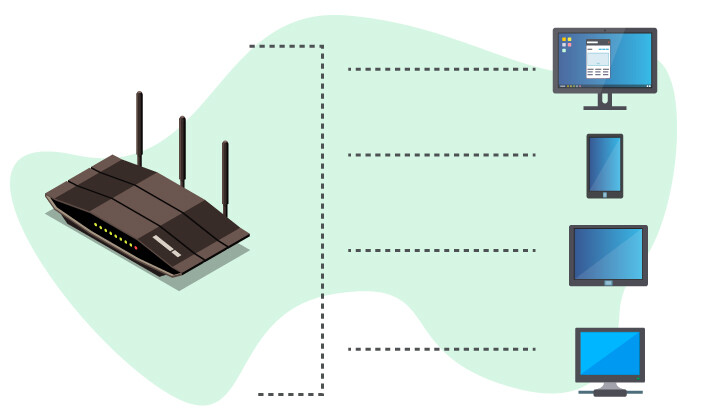
Finally, It is necessary to have routers that allow you to connect to other IP networks without having to use the regular telephone network, which results in unlimited free IP calls, which, if we compare this in terms of cost, is a big saving.
VoIP vs Traditional Telephony: What Are The Differences?
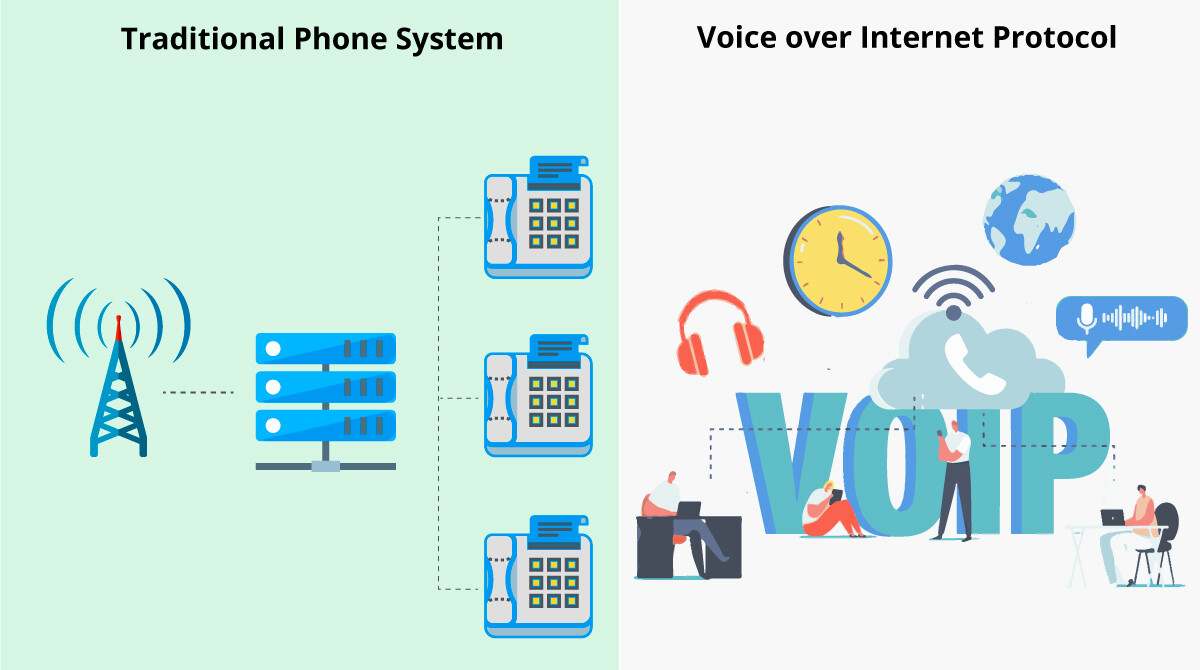
VoIP calls convert the voice into data packets without the need for any exchange until it reaches its recipient in digital form, while regular calls require an exchange where the voice transmission will reach the recipient, many people call it peer-to-peer communication.
Although a regular telephone needs physical lines to establish a connection, IP telephony does not need them but depends on the network structure, which does not generate any restrictions, and thanks to this functionality, different users of the world can hold conferences at the same time (conferencing). Not only that, another advantage that is very important in the business layer is that since it does not depend on any physical line, companies can establish a network connection between stores, forming an interconnected network with buyers and suppliers. with the same unique header number.
We can use our IP line with a smartphone and several contact numbers thanks to the contact numbers hosted in the provider’s cloud.
The advantage of IP telephony is that it allows you to quickly change the virtual PBX base: include or exclude subscribers from it. Most of the functionality is implemented through “cloud” technologies. Virtual PBX allows you to build an office structure, regardless of the scale of the business. At the same time, digital communication systems make it possible to use virtual data exchange channels within a single network of branches, which eliminates the need to install equipment in all offices and branches.
Related topics:
>
>
>
>
What is ACD or Automatic Call Distribution? | Smart ACD Routing
>
قراءات
أحدث الأخبار
مقابلات، نصائح، دليل، أفضل الممارسات في الصناعة، وأخبار

Strategies for a Productive First Contact with Clients
Take time to focus on the First Contact with Clients, so you can adjust the customer experience (CX) strategy to provide the best service.
اقرا المزيد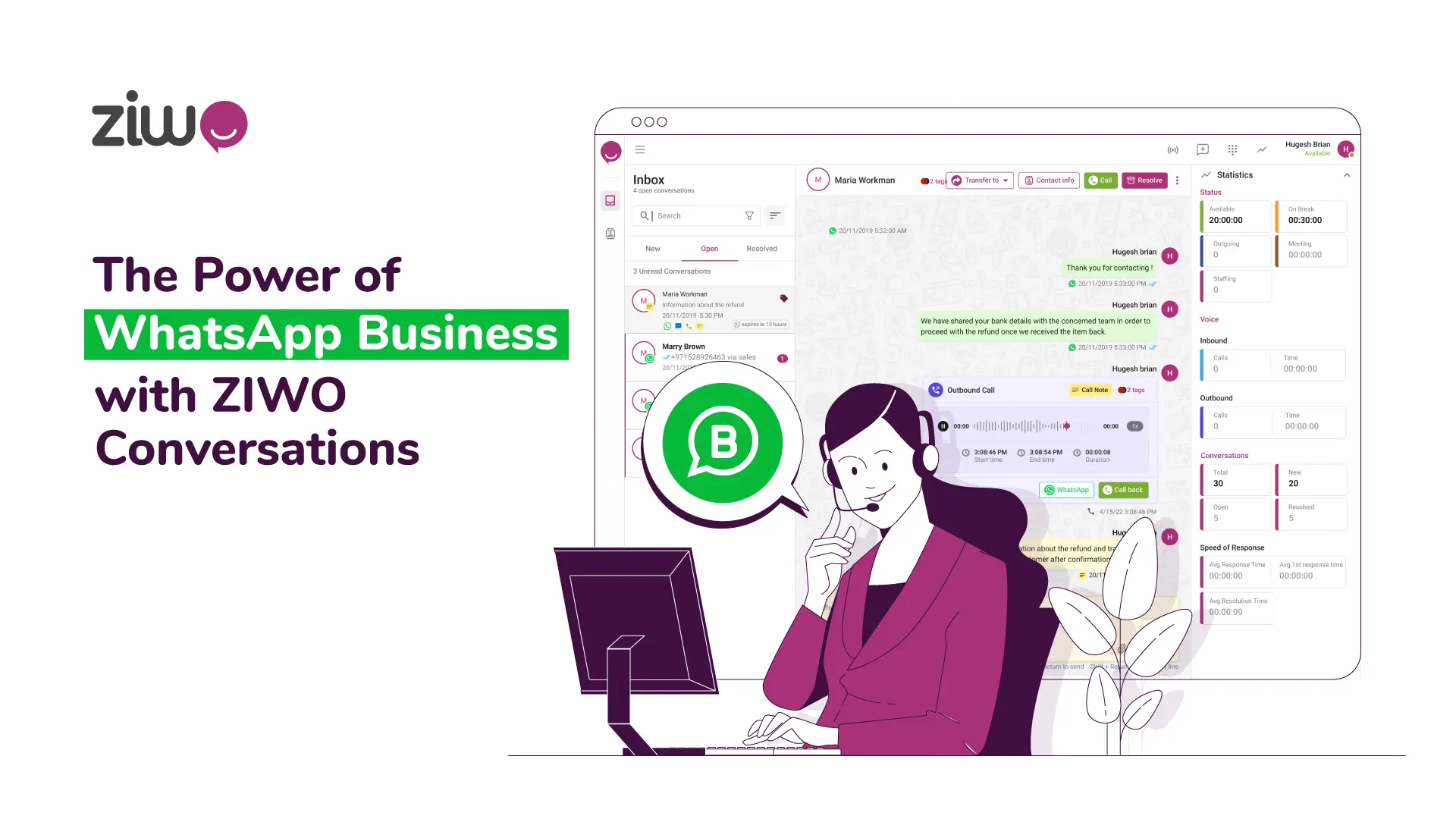
The Power of WhatsApp Business with ZIWO Conversations
ZIWO Conversations is recognized as the premier WhatsApp Business Companion, elevating both customer experiences and team collaboration to a higher standard.
اقرا المزيد
Pause and Resume Call Recording – Benefits & Industries
agents can manually pause and resume call recordings, Once an administrator has enabled the feature, agents will see a button on the dialpad
اقرا المزيد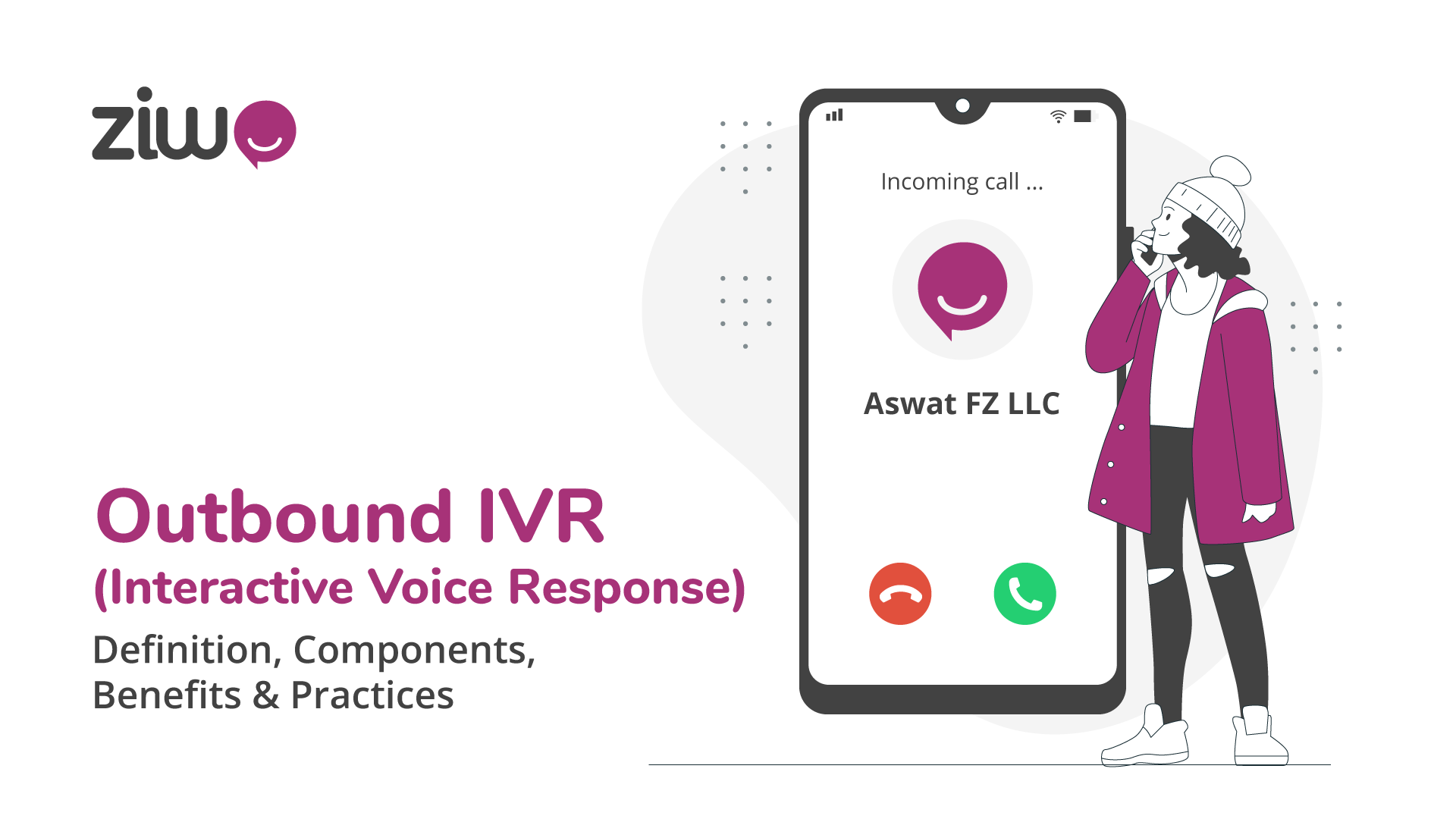
Outbound IVR (Interactive Voice Response) – Definition, Components, Benefits & Practices
Outbound IVR feature is a contact center tool that is used to proactively distribute communications to customers with a predefined IVR menu.
اقرا المزيد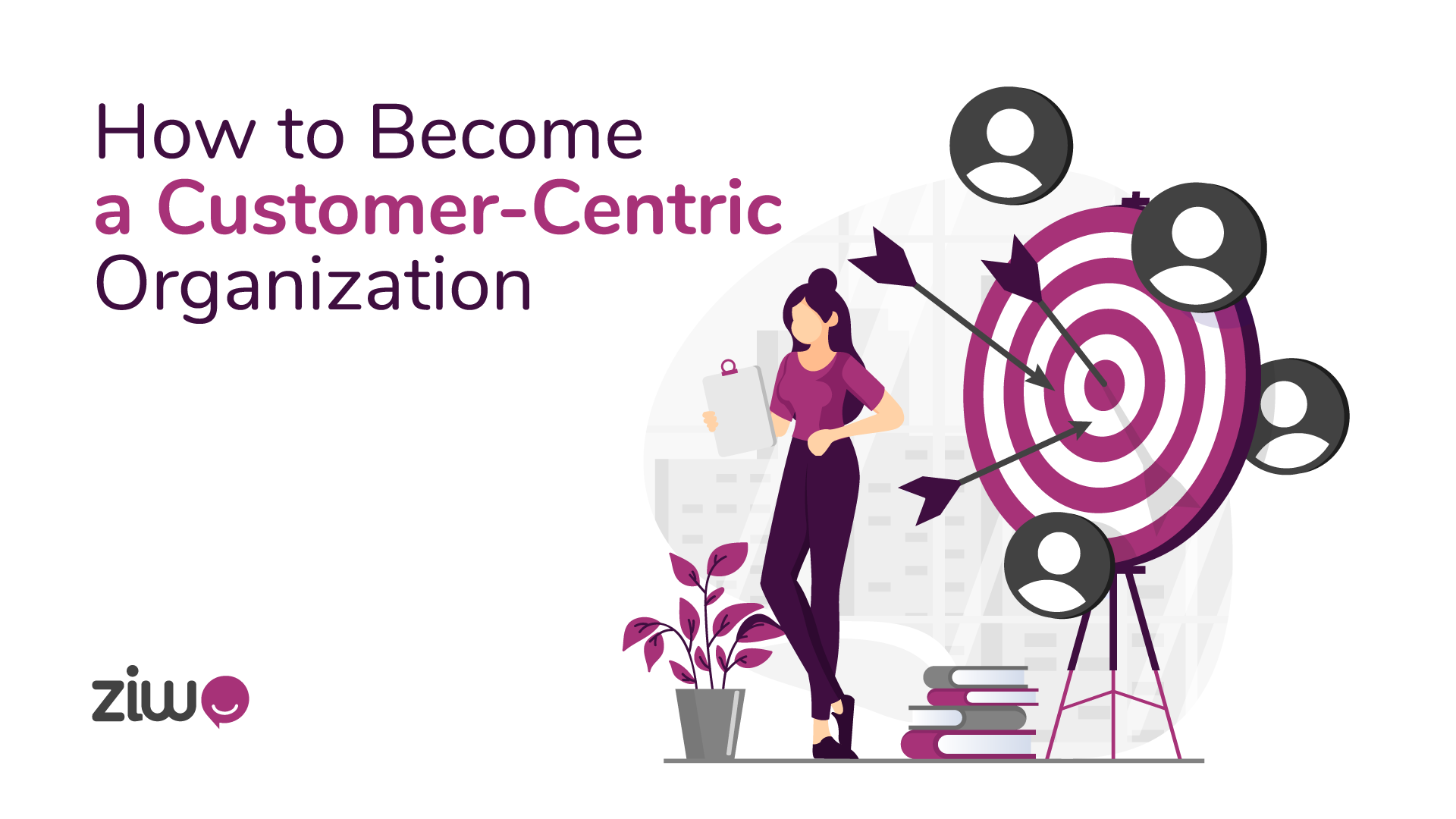
How to Become a Customer-Centric Organization
Ways to Build a customer-centric culture in your company, customer-centricity needs to be part of your philosophy, values, and mission daily.
اقرا المزيد
Multilingual Contact Centers: Bridging Language Gaps
Discover how multilingual contact centers overcome language barriers to deliver outstanding assistance, thereby elevating customer experience
اقرا المزيد



